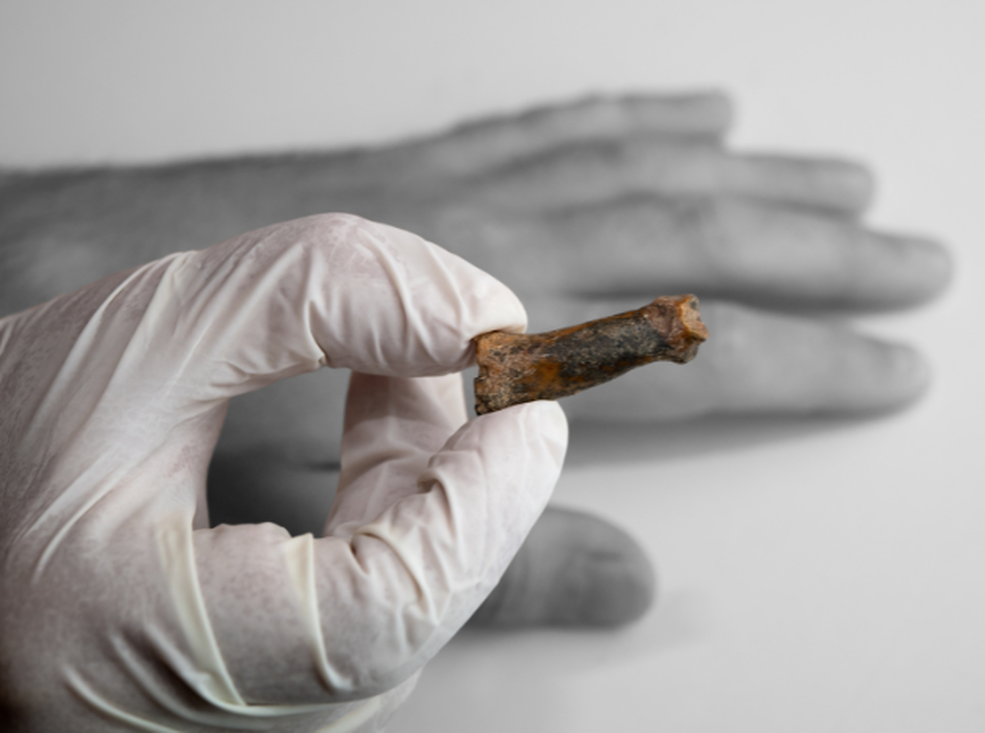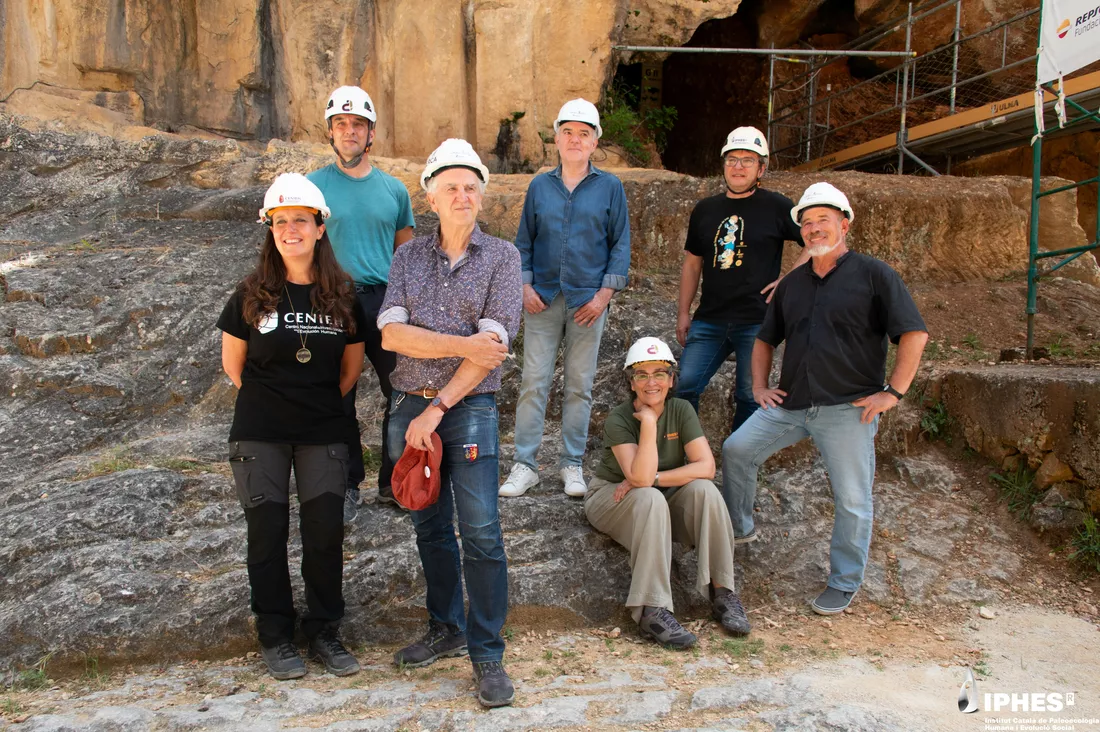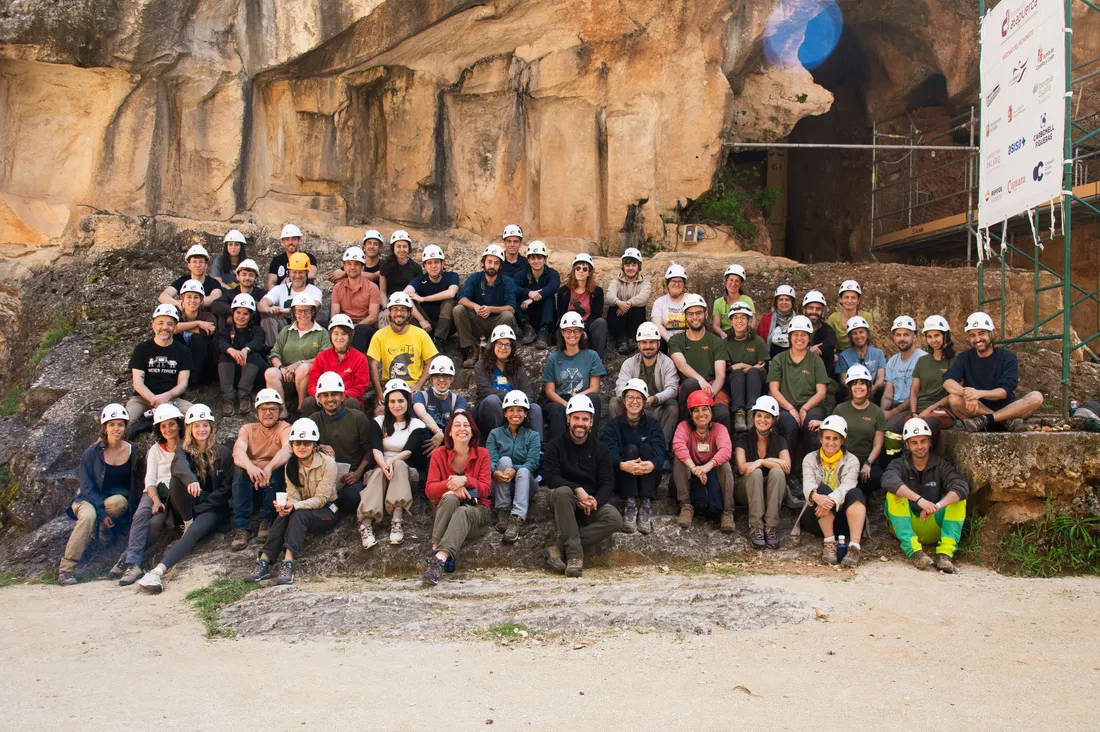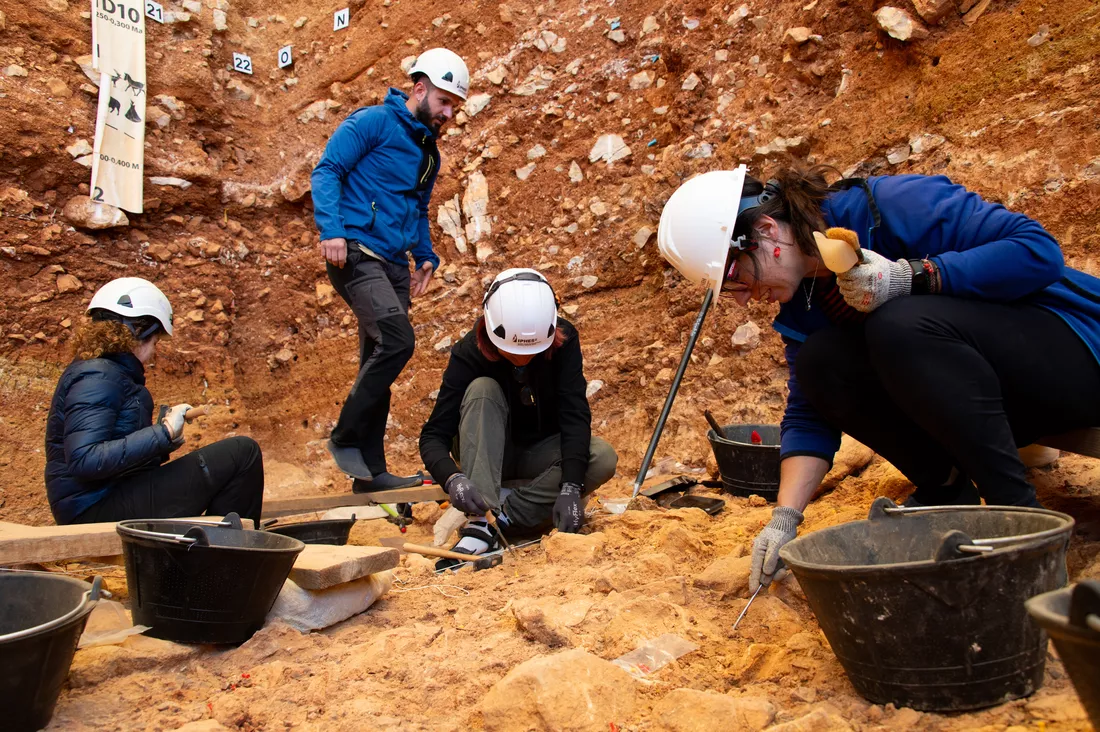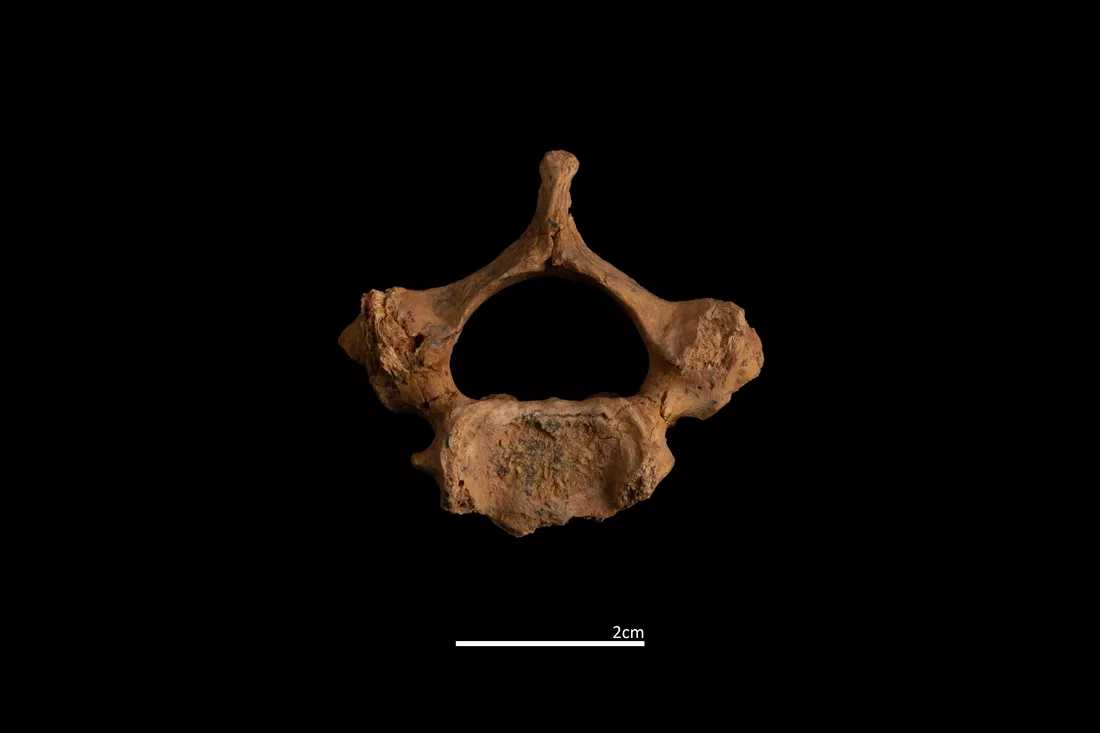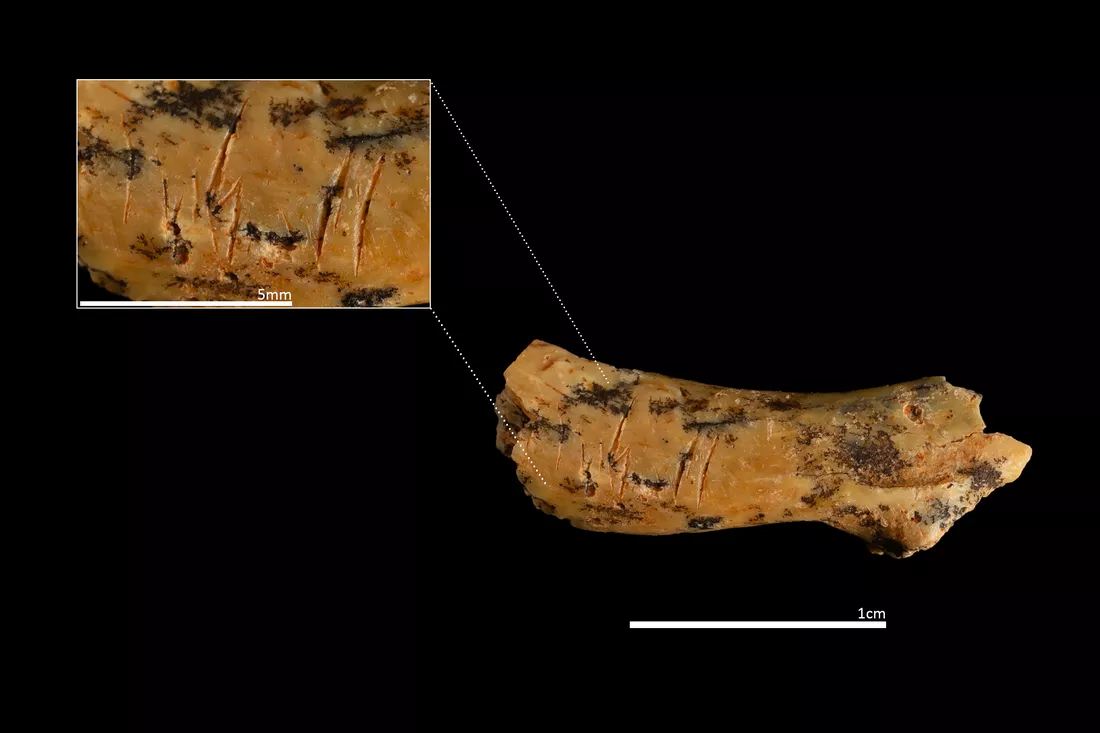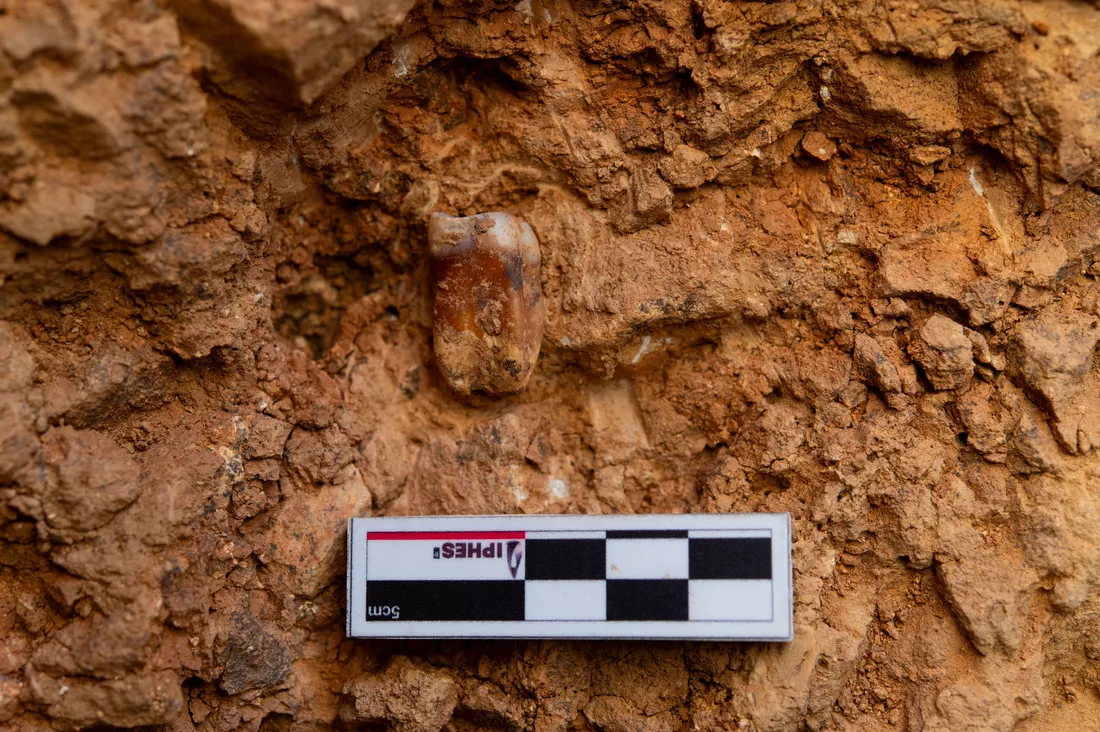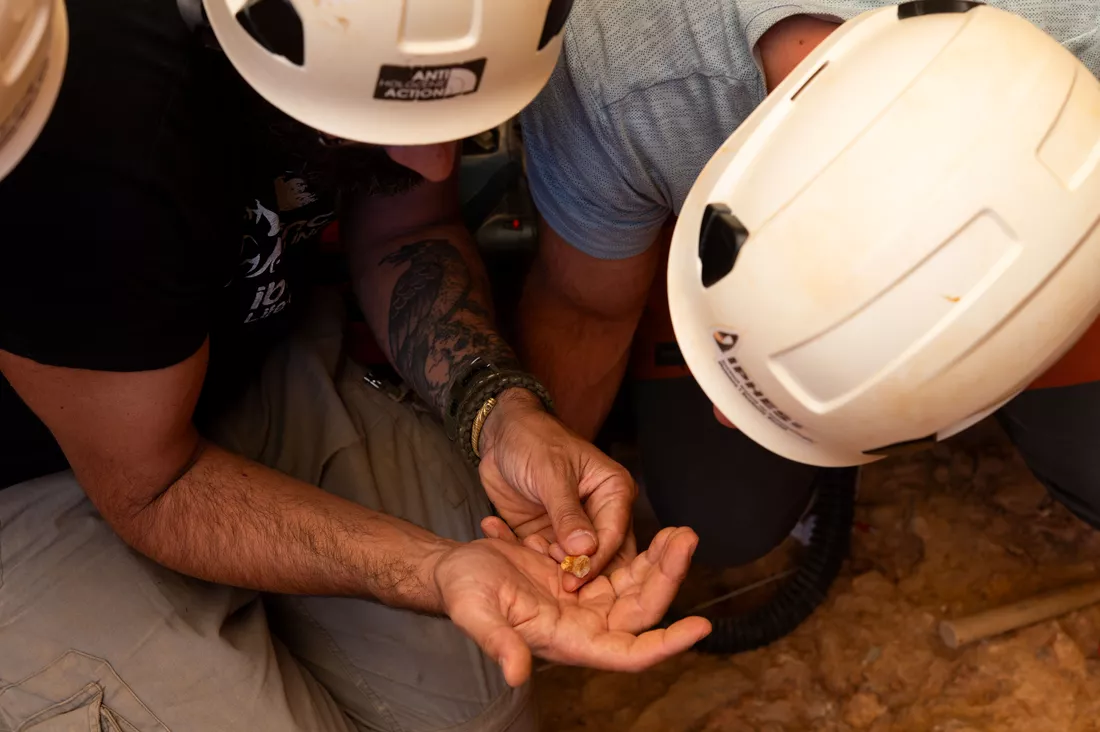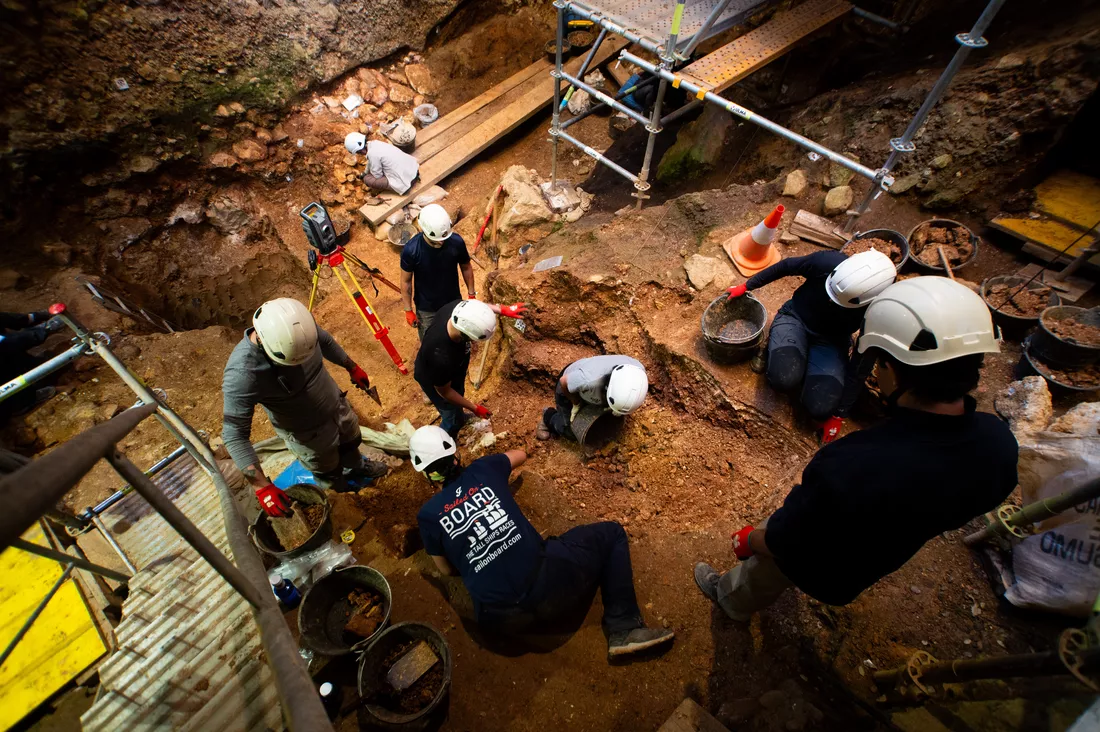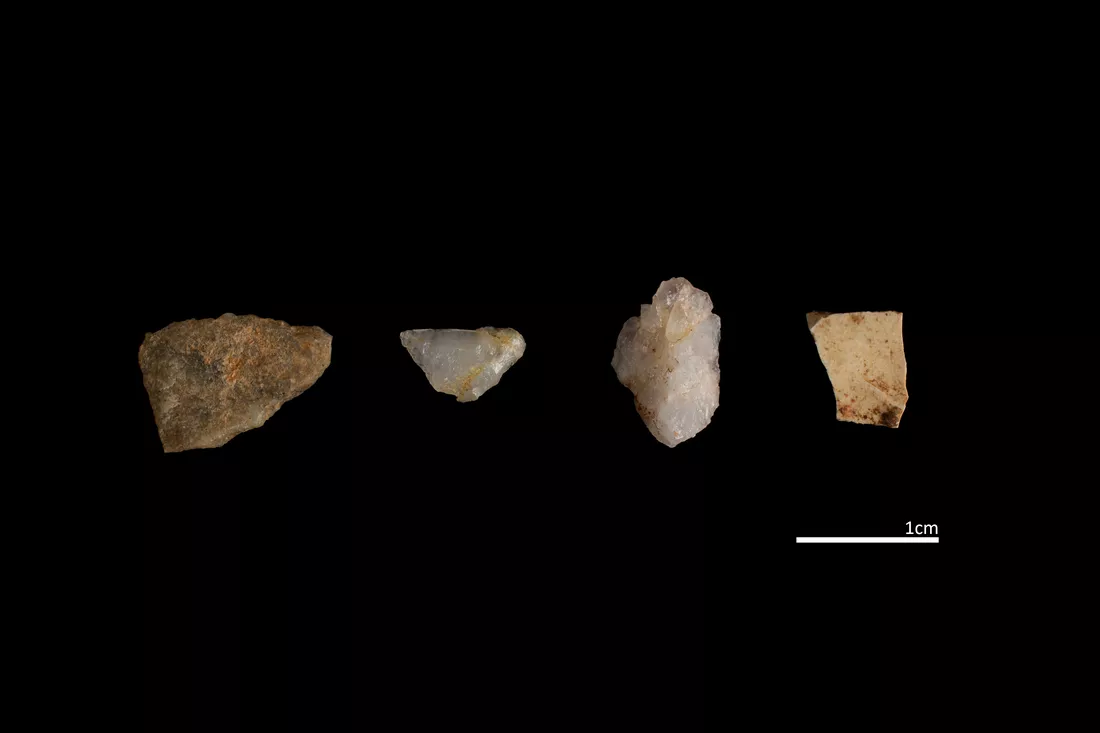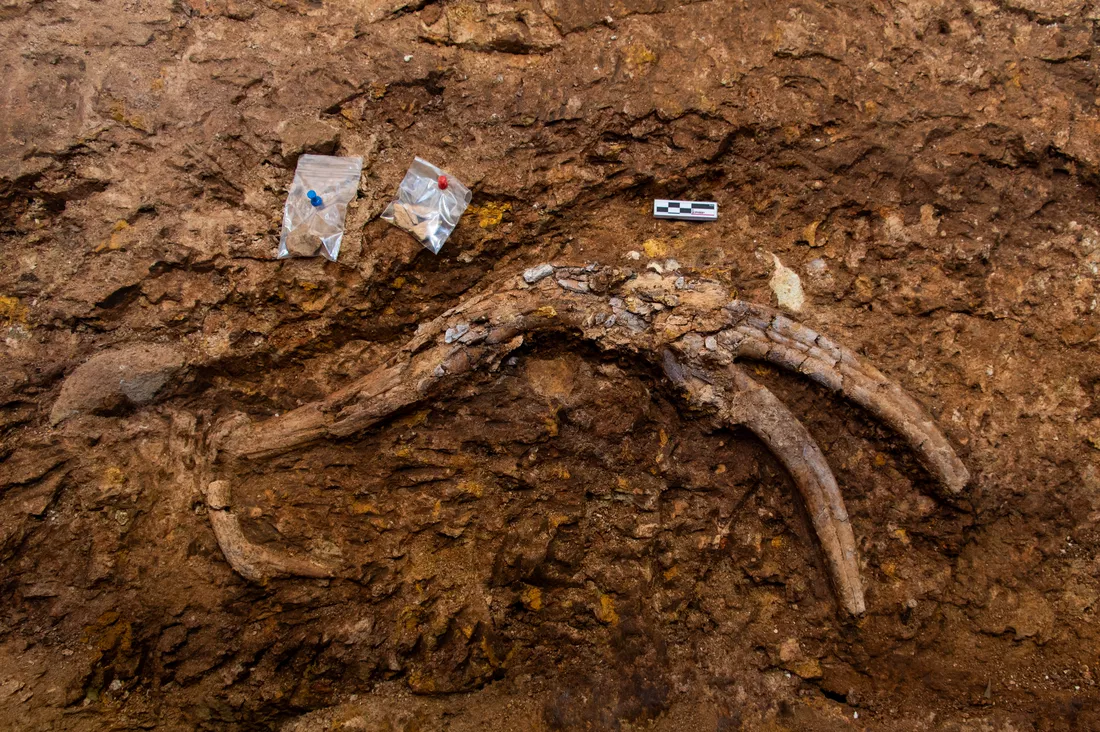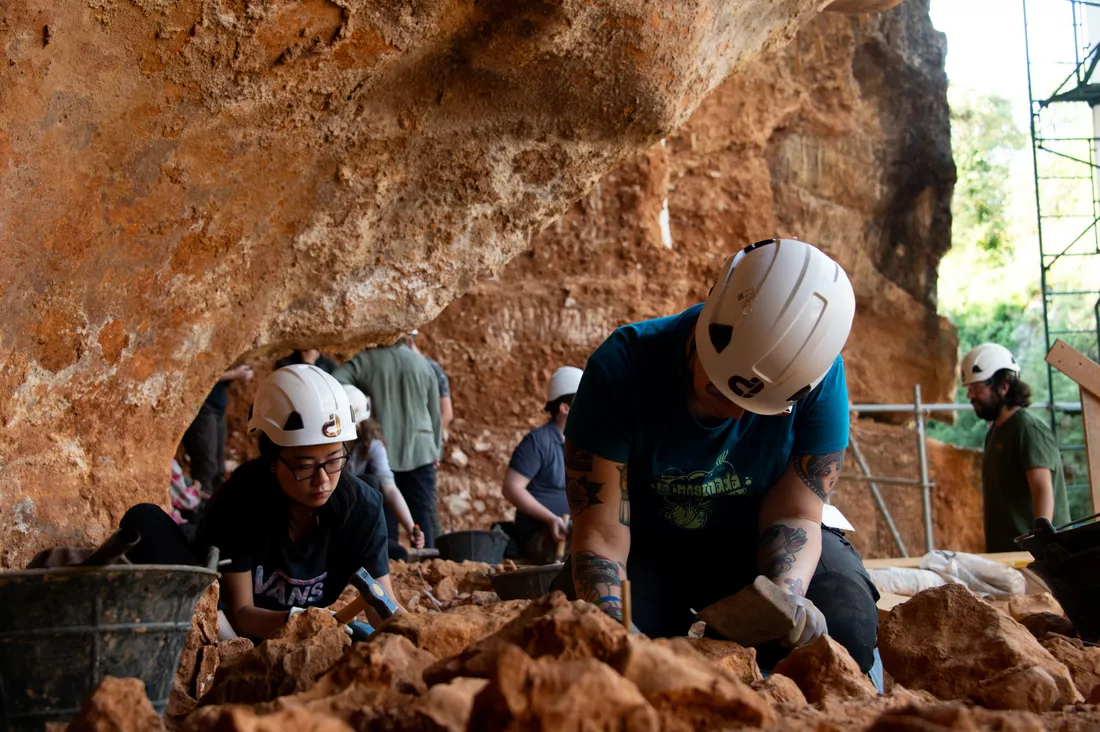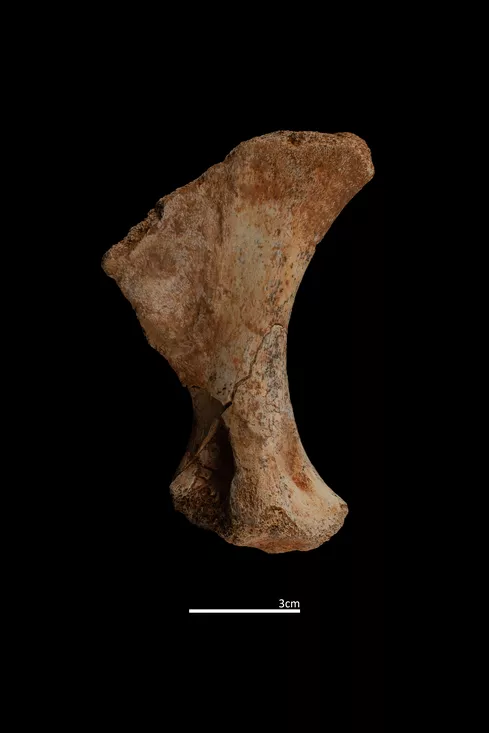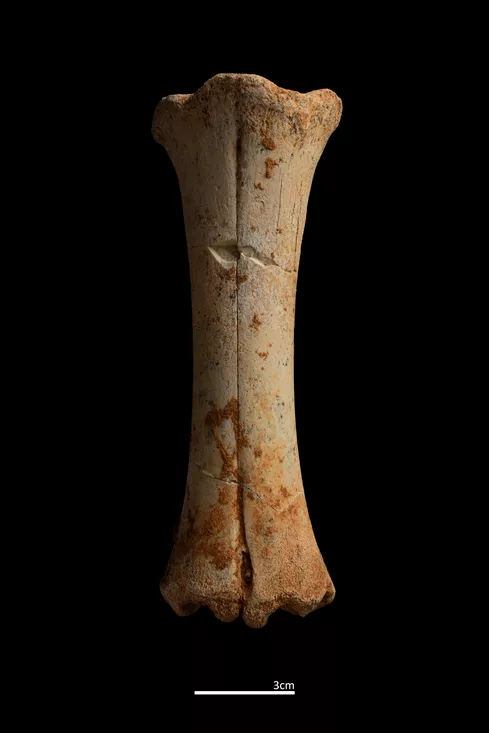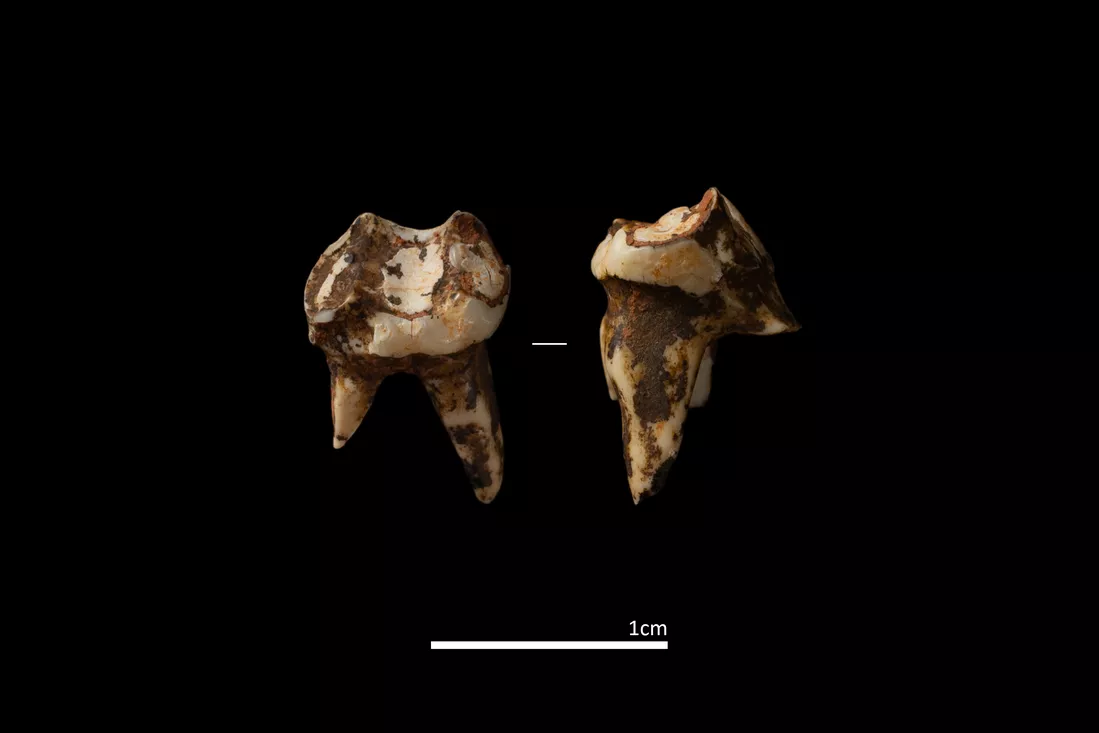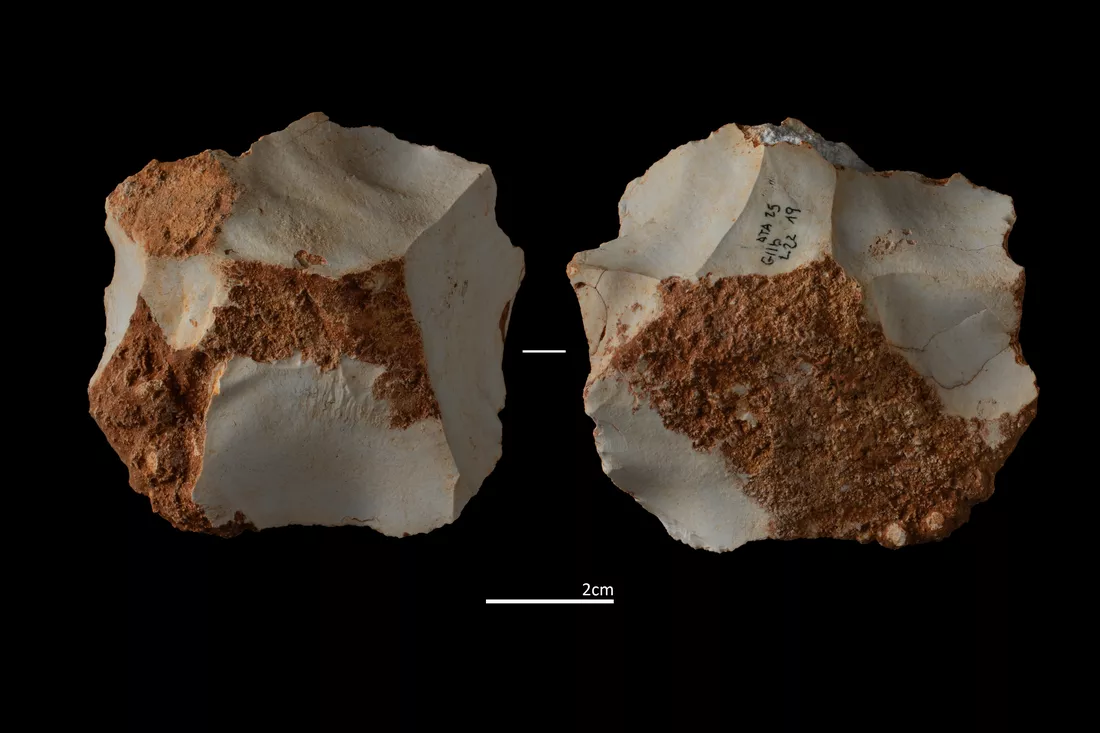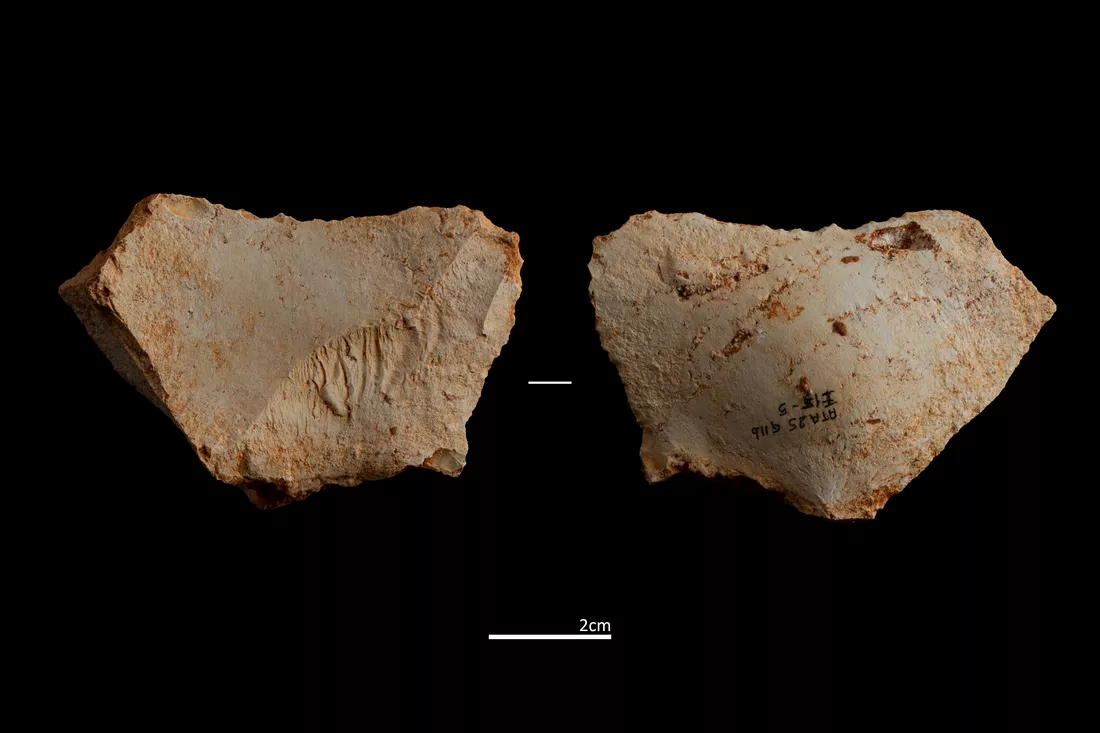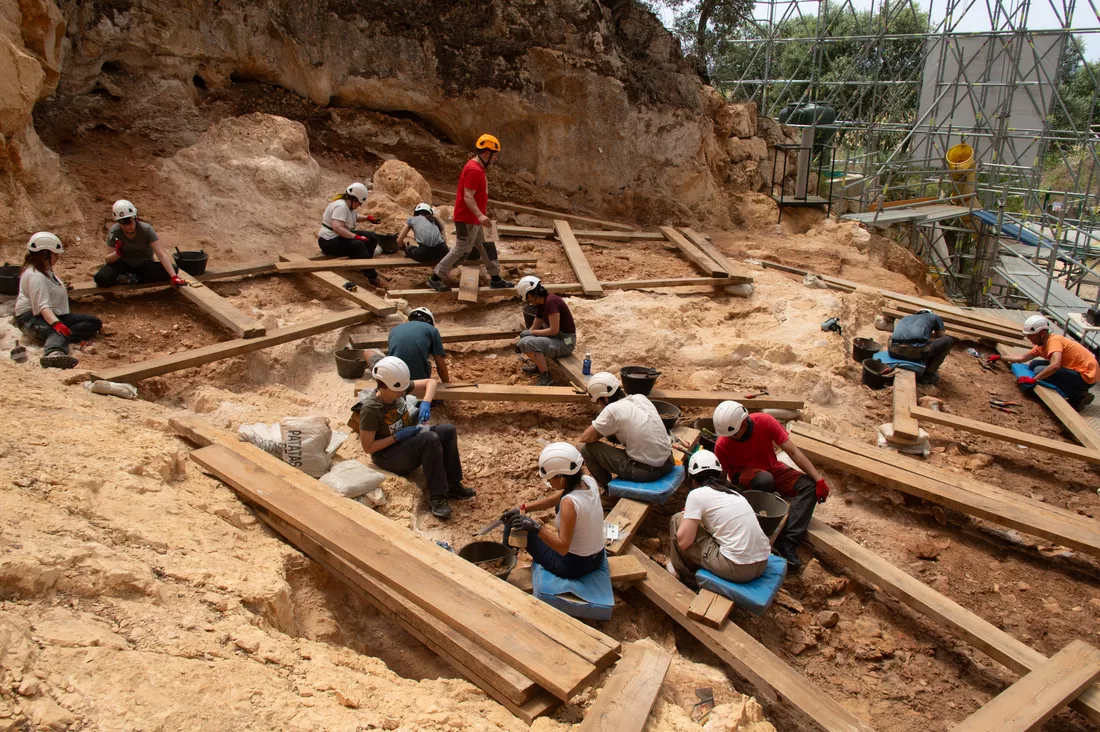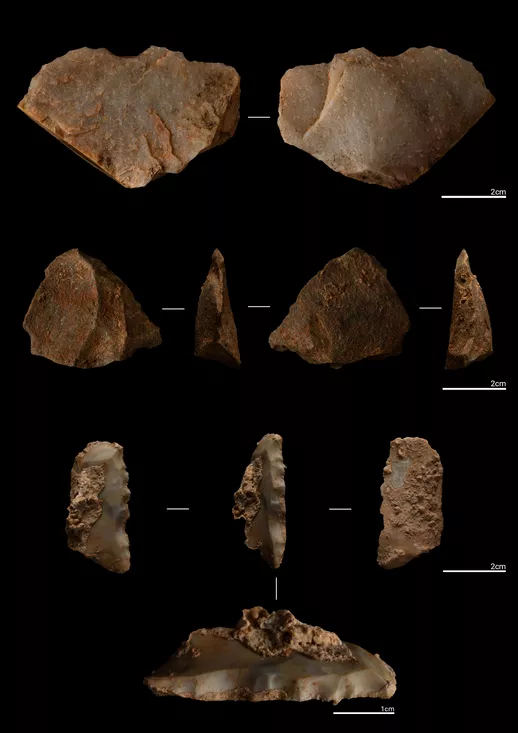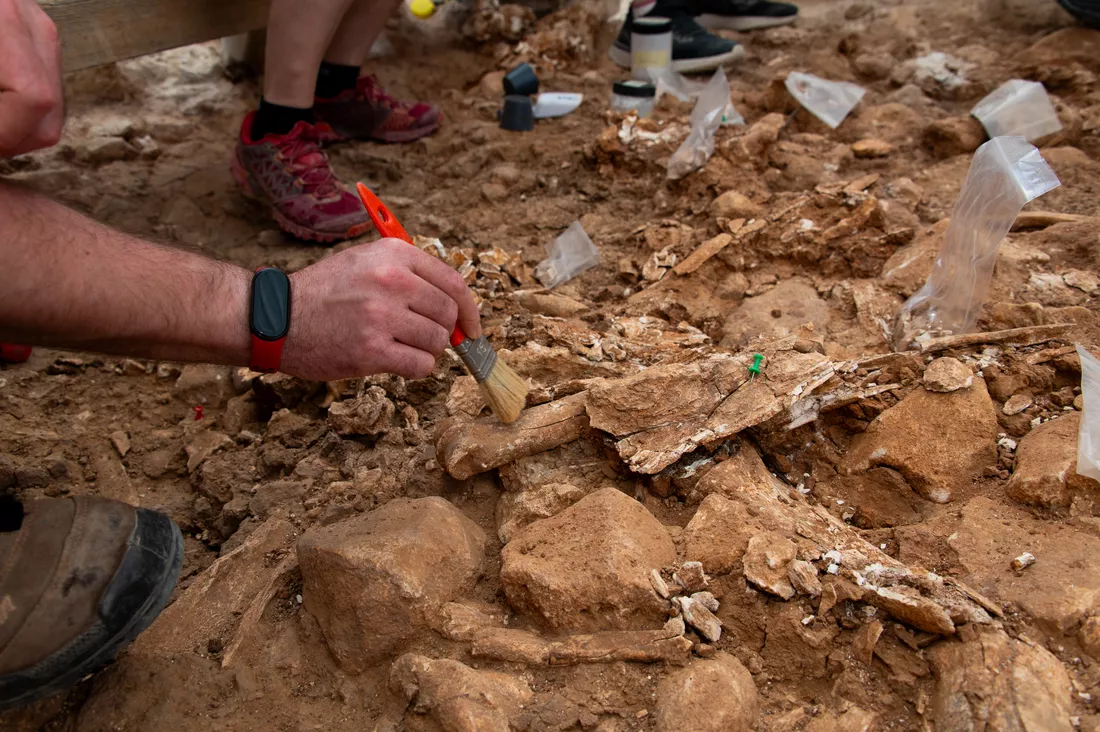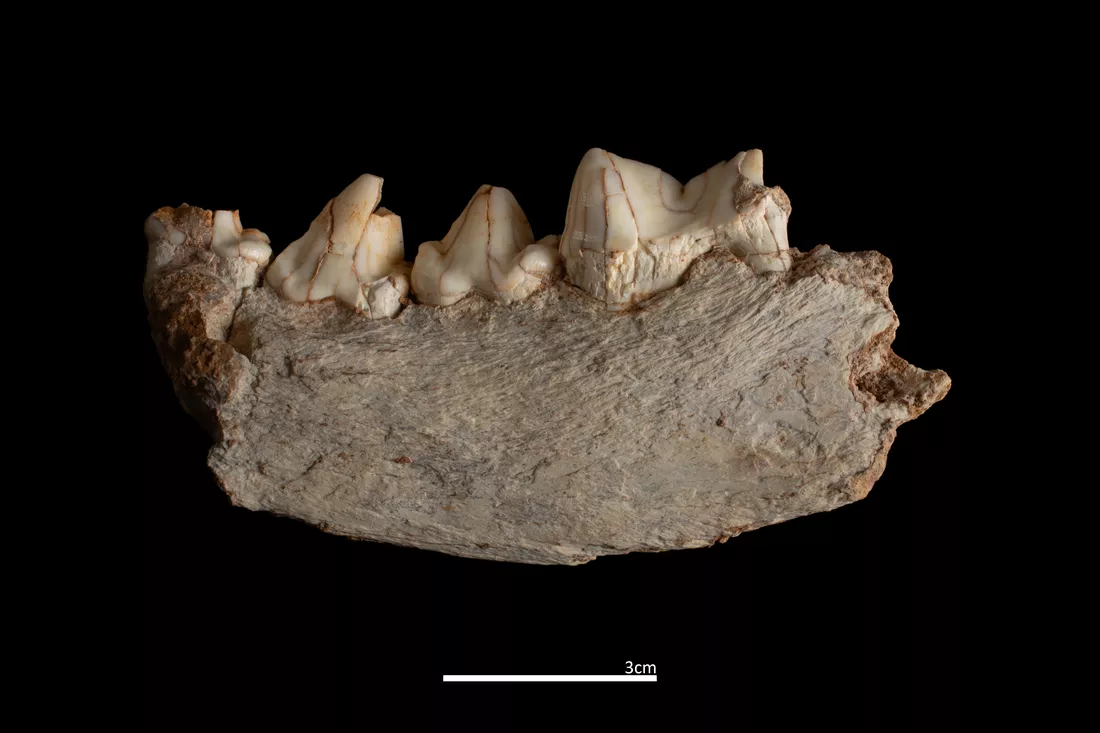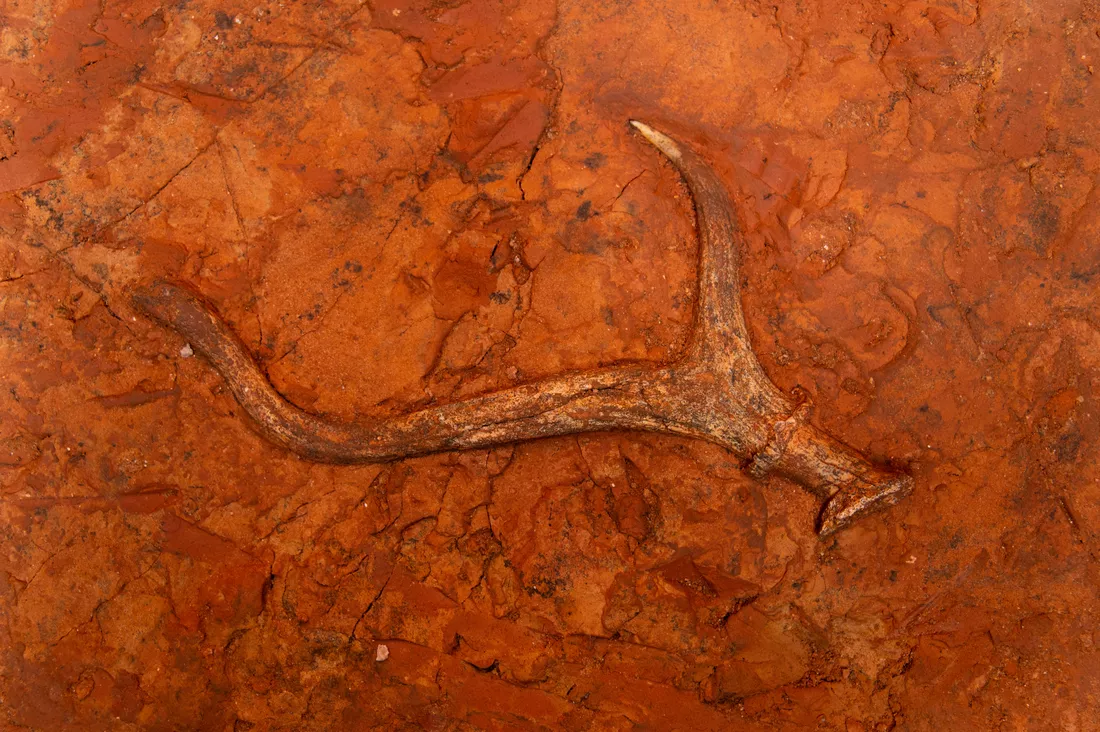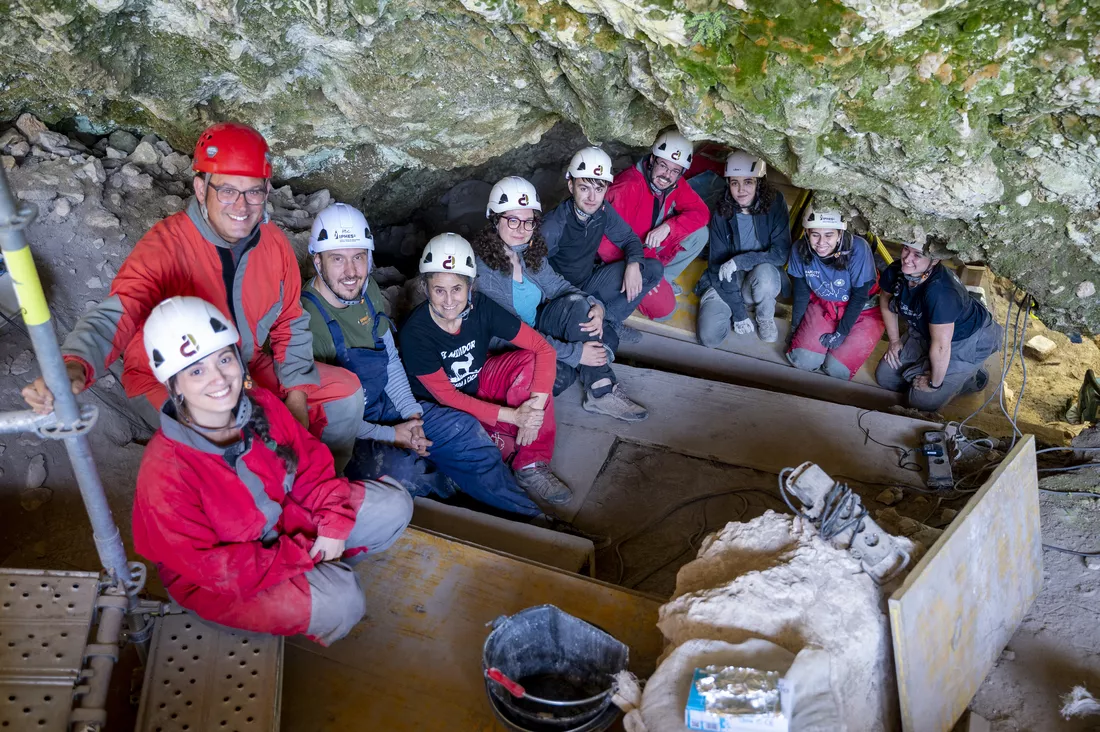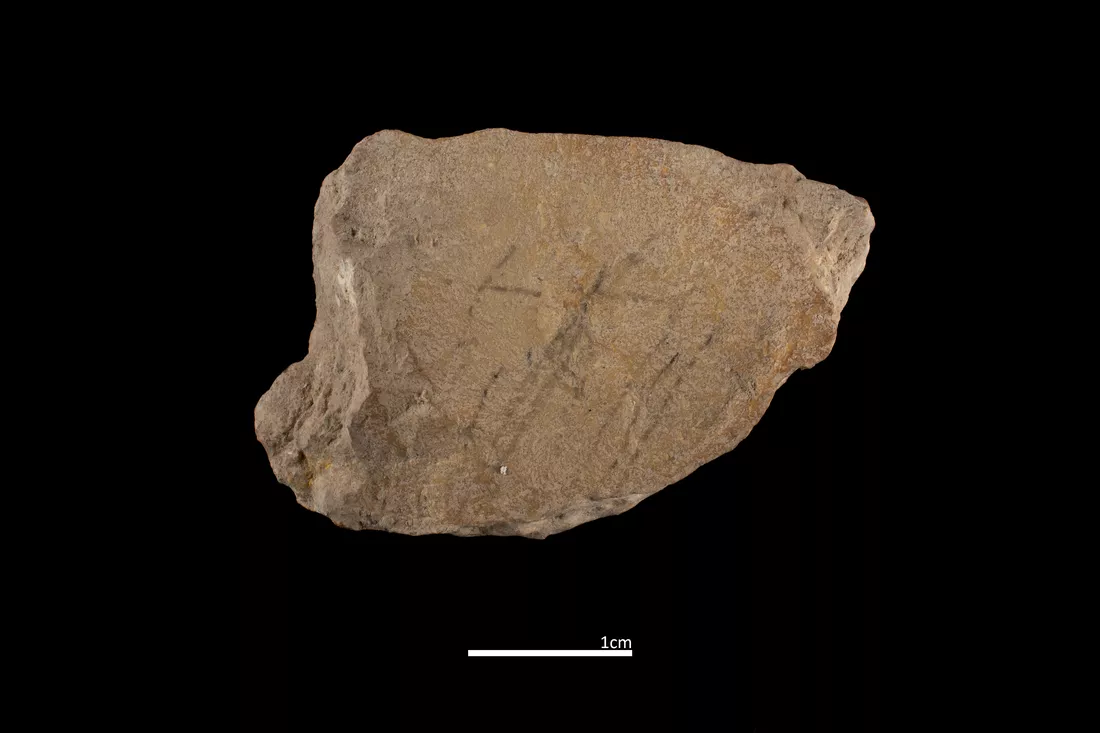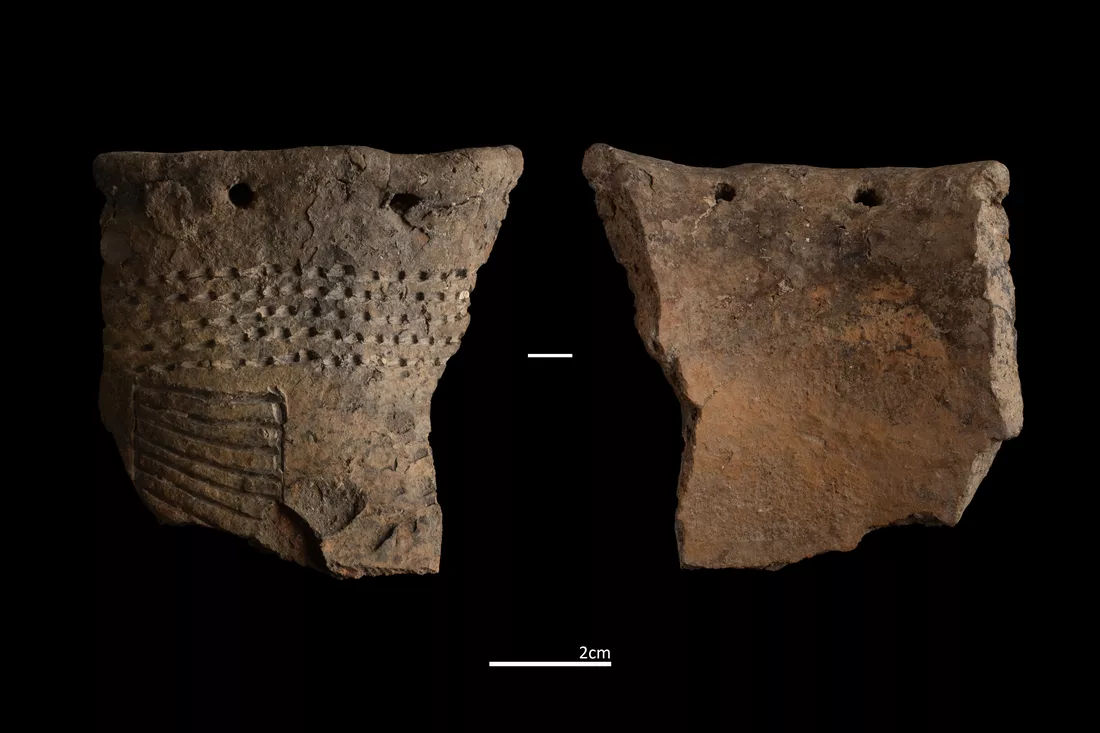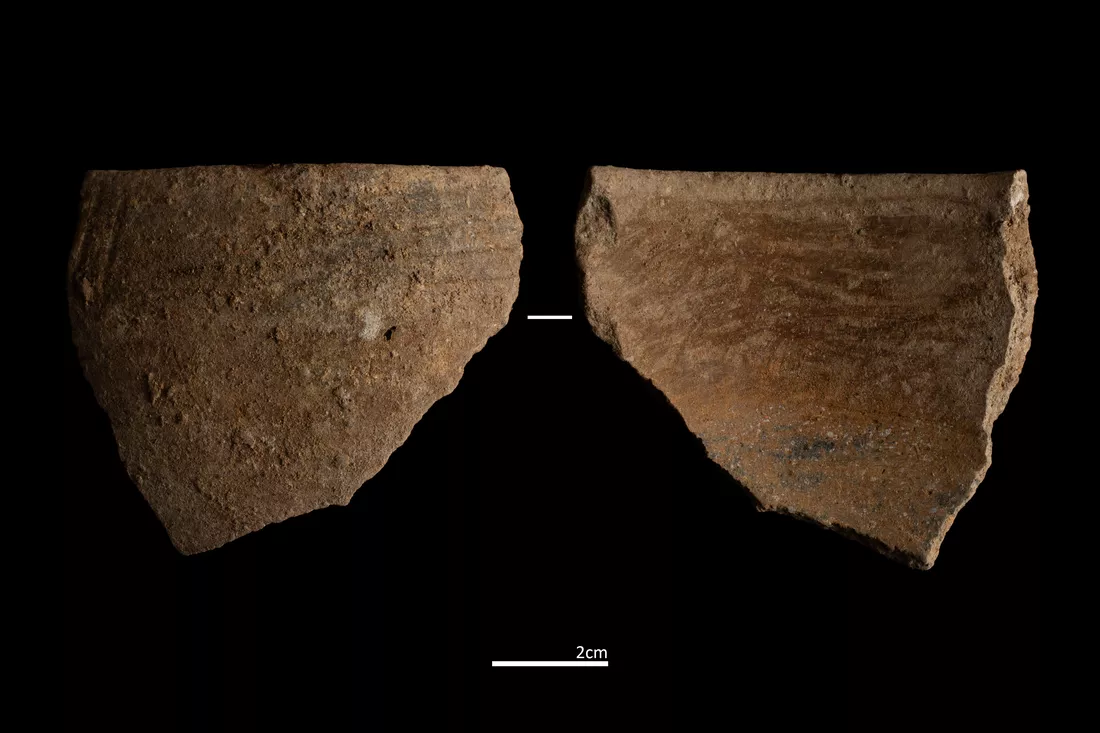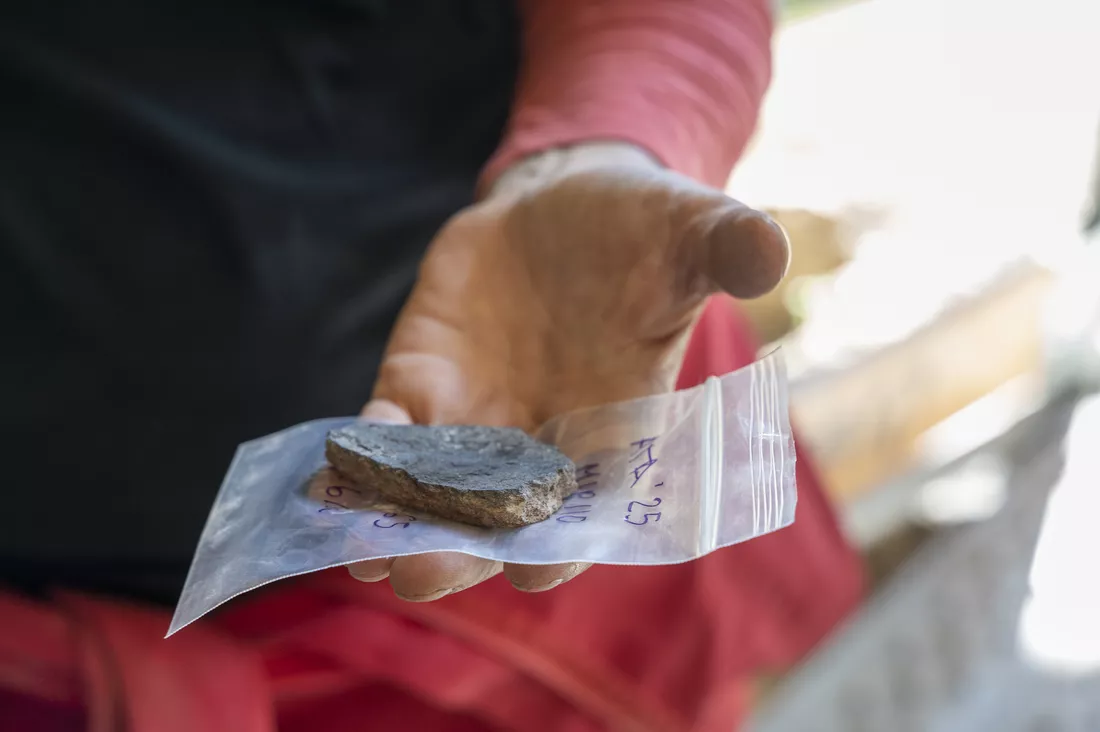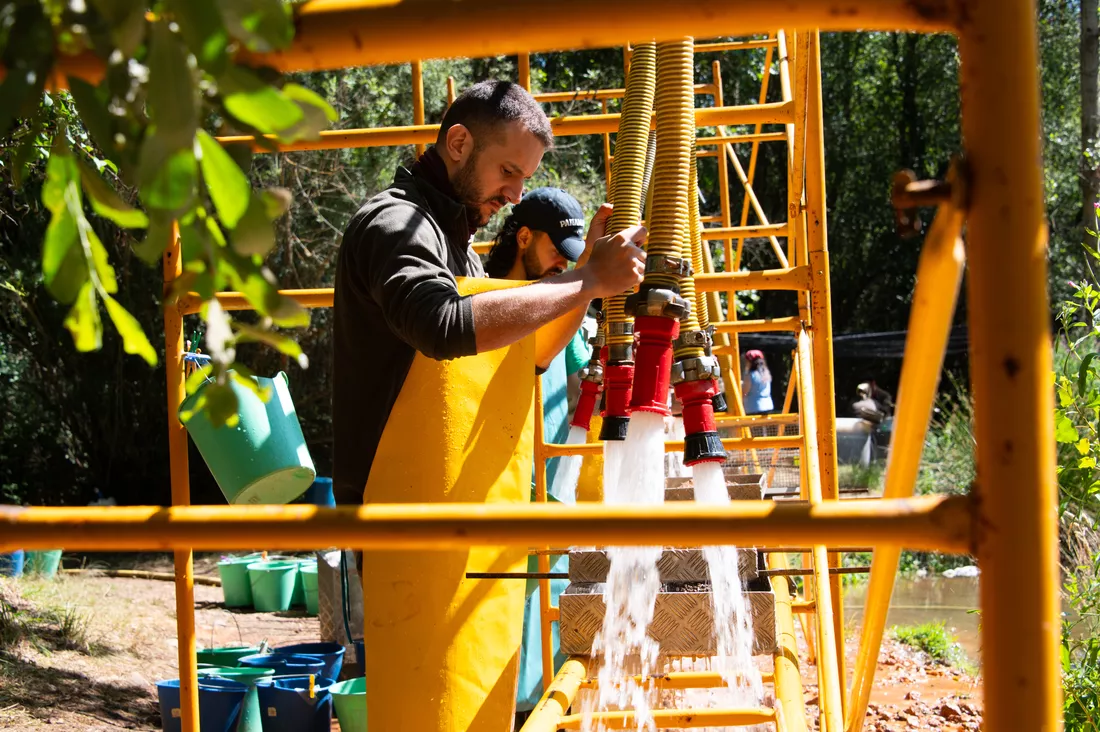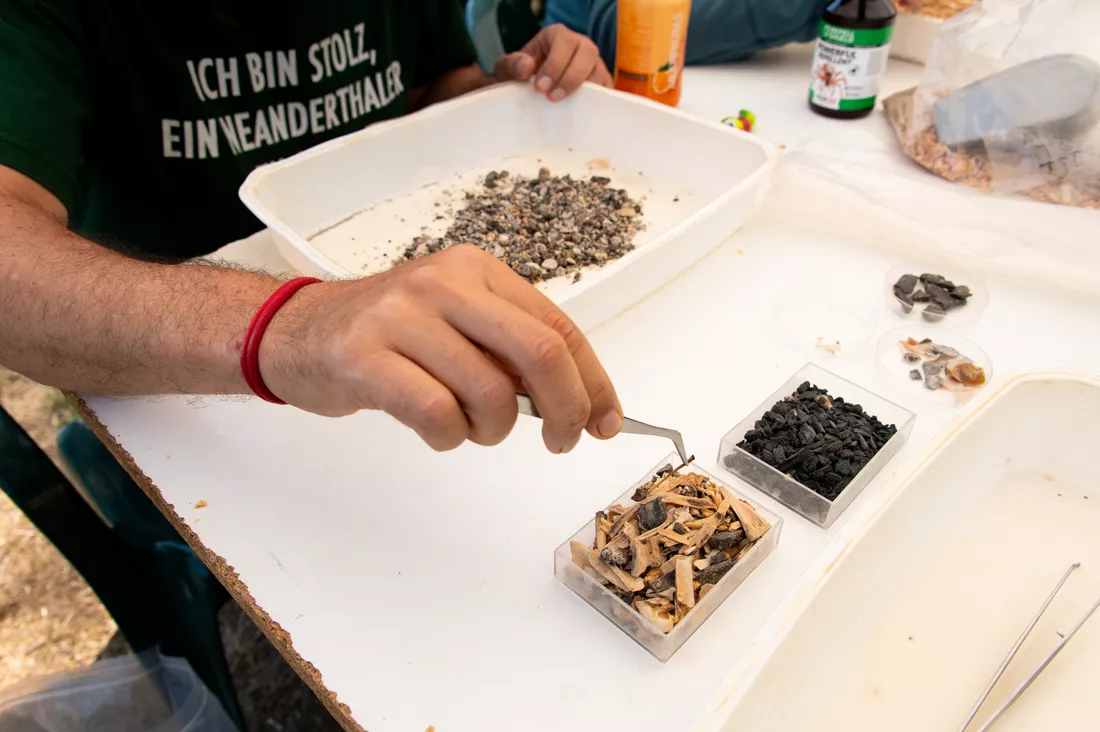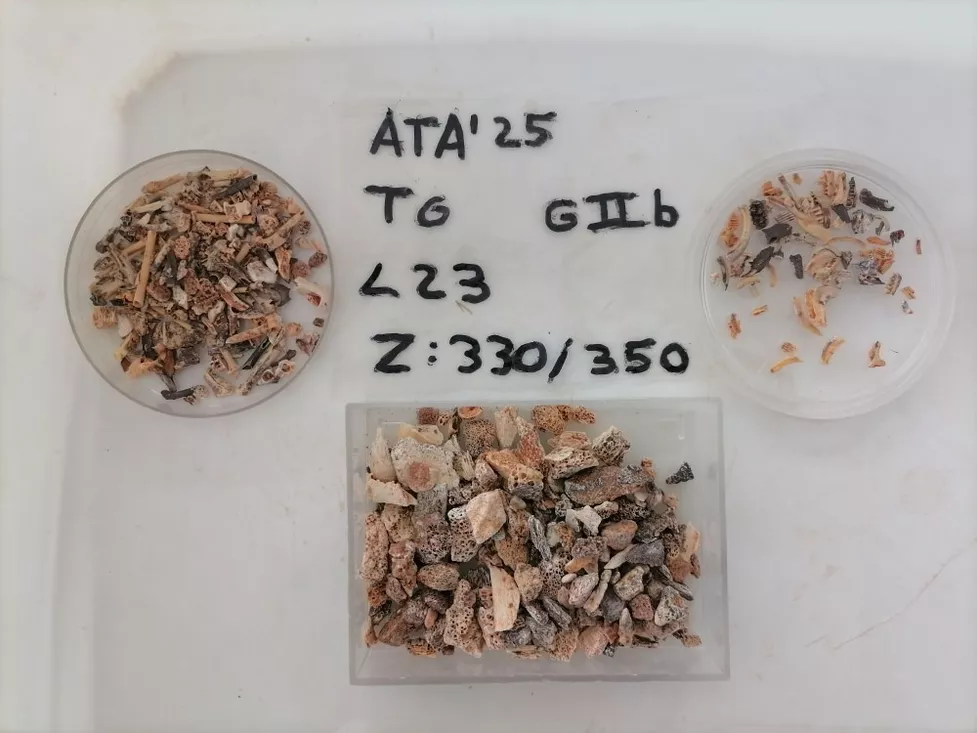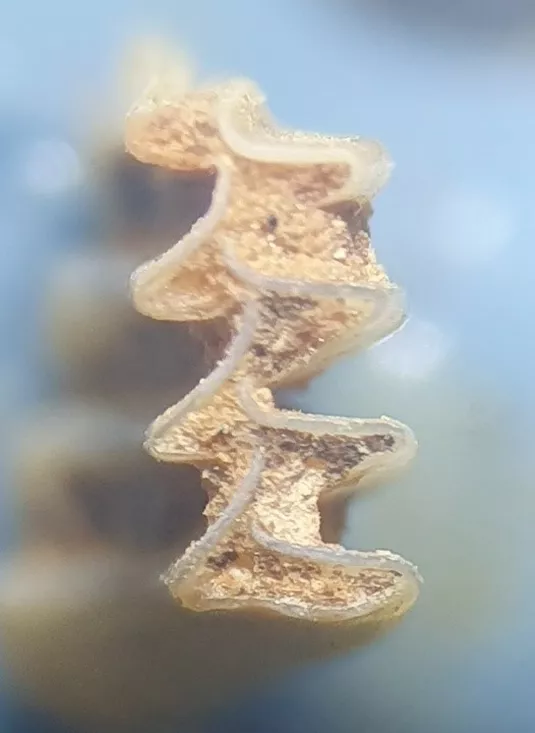The Atapuerca 2025 campaign marks a turning point with new discoveries and renewed direction
The extensive excavation work in unit TD6 of the Gran Dolina has provided new human remains of Homo antecessor
IPHES-CERCA has played a key role in coordinating work at several sites and on the river, and now also assumes significant responsibilities within the project's new management team
Excavation work at the Sierra de Atapuerca site (Burgos), which began on June 20th, concluded today. More than 300 researchers from around the world participated in the excavation. The Catalan Institute of Human Paleoecology and Social Evolution (IPHES-CERCA) had a prominent presence, with nearly 120 members, including research and technical staff and students from the Erasmus Mundus Master's program in Quaternary Archaeology and Human Evolution at the URV. They coordinated excavations at five key sites and sediment washing in the river.
The 2025 campaign was also the first under the responsibility of the new Atapuerca Project management team, following the retirement of Drs. Eudald Carbonell and José María Bermúdez de Castro, and the gradual withdrawal of Dr. Juan Luis Arsuaga. The leadership renewal was the result of a planned, gradual, and strategic handover, built over decades of collaborative research, and was carried out with complete normality and a spirit of continuity. From the outset, the new team worked closely with the previous directors to ensure a smooth and effective transition, promoting joint projects and defining shared strategic lines.
The new co-direction team is made up of six renowned researchers: Dr. Marina Mosquera and Dr. Andreu Ollé (both members of IPHES-CERCA and the URV), Dr. María Martinón and Dr. Alfonso Benito (CENIEH), and Dr. José Miguel Carretero and Dr. Ignacio Martínez Mendizábal (University of Burgos and University of Alcalá). The presence of two members of IPHES-CERCA, one of whom (Mosquera) also serves as director of the center, strengthens Catalan scientific leadership in one of the most important archaeopaleontological projects in the world.
Among the most notable results of the campaign is the recovery of new human remains attributed to Homo antecessor in unit TD6 at the Gran Dolina site , dating back approximately 850,000 years. Thirty years after the initial discovery of this species in a small survey, the research team has been able to excavate a full extent of unit TD6, confirming that it is preserved intact over an area of over 40 m². “ With relief, surprise, and great excitement, we have noted the exceptional state of conservation of the unit ,” noted Dr. Marina Mosquera. Drs. Palmira Saladié and Andreu Ollé, researchers at IPHES-CERCA and coordinators of the excavation at Gran Dolina, add: “Although we have not yet reached the layers richest in human remains, the sensations are very positive and everything indicates that a new era of great discoveries is opening in one of the jewels of Atapuerca and of world paleoanthropology .”
MOST OUTSTANDING FINDINGS FROM EACH SITE
During the 2025 excavation campaign, the IPHES-CERCA research team coordinated excavation work at the Gran Dolina, Sima del Elefante, Galería, and Cueva Fantasma sites, all located in the Trench of the Railway, as well as at El Mirador Cave. In addition, sediment washing and screening were carried out in the Arlanzón River, as it passes through the municipality of Ibeas de Juarros (Burgos).
Gran Dolina, unit TD6
Coordinated by Dr. Palmira Saladié, IPHES-CERCA researcher, and Dr. Andreu Ollé, IPHES-CERCA researcher
The 2025 campaign continued the third phase of excavation of unit TD6 at the Gran Dolina site, which began two years ago. This unit contains the so-called Aurora stratum (TD6.2), where, in two previous stages (1994–1997 and 2003–2011), the remains of a camp dating back 850,000 years were uncovered.
At that time, about 180 human fossils were recovered , along with a large number of remains of deer, horses, bovids and other animals, as well as a set of stone tools that had been made, used and abandoned at the site.
The study of these fossils allowed us to document the oldest episode of cannibalism known to date, and also revealed a combination of anatomical features that led to the proposal, in 1997, of a new species: Homo antecessor .
Work in 2025 continued to focus on excavating the roof of the unit (designated TD6.1). A hyena latrine containing more than 1,300 coprolites (fossilized droppings) of this carnivore has been documented at this level, an exceptional find that provides invaluable paleoecological information about the time the cave ceased to be used as a human settlement.
In contact with the coprolite layer, in addition to some animal bones, stone tools made from different raw materials and a new assemblage consisting of 10 human fossils of Homo antecessor have been found . First, two teeth have been identified, allowing the identification of a new individual, a young adult. In addition, three vertebrae, a phalanx from the index finger, a rib fragment, and three limb bone fragments have been recovered. Some of these fossils show cut marks and impact fractures related to the fleshing of the bodies and the extraction of bone marrow, clear indications of cannibalism practices documented at this level.
Among these remains, a fragment of the second cervical vertebra (axis) of a child, between 2 and 4 years old, stands out, showing cut marks related to the separation of the head from the trunk
The results of this campaign confirm the great fossil wealth of unit TD6 , which has already yielded 200 human fossils, and bode well for exceptional campaigns in the coming years. All of this undoubtedly reinforces the international scientific community's interest in the research conducted by the Atapuerca team.
Sima del Elefante
Coordinated by Dr. Rosa Huguet, researcher at IPHES-CERCA, and Dr. Xosé-Pedro Rodríguez, professor at the Rovira i Virgili University and researcher at IPHES-CERCA.
The results of the 2025 excavation campaign at Elephant Pit have been very positive and have allowed us to achieve the two major objectives initially set. First, excavation has continued on the upper part of level TE7, where the human fossil known as " Pink " was discovered in 2022.
This intervention has allowed the recovery of numerous faunal remains and stone tools. Regarding the fauna, the remains of a horse, fallow deer, beaver, bear, and a small carnivore in close association are noteworthy. The stone artifacts discovered in level TE7 during this campaign include six small flakes made from different types of rock (quartz, Cretaceous flint, and quartzite), as well as a limestone pebble with several extractions. This set of findings will help us better understand the subsistence strategies of the hominins who inhabited the Sierra de Atapuerca approximately 1.3 million years ago.
Meanwhile, the excavation of a test pit begun in 2019 has been completed, aiming to locate the base of the sedimentary sequence at Sima del Elefante. During last year's campaign, a pair of boulders were found in this test pit that could correspond to an ancient Arlanzón River terrace. Continuing the test pit during the 2025 campaign has confirmed the existence of this fluvial terrace, which could be correlated with the terrace identified inside Cueva Peluda.
Garía
Coordinated by Dr. Isabel Cáceres, professor at the Rovira i Virgili University and researcher at IPHES-CERCA, and by Dr. Paola García Medrano, associate researcher at IPHES-CERCA.
The 2025 campaign in Galería focused on the excavation of the GIIb subunit, which is approximately 300,000 years old.
The work has yielded more than 1,300 faunal remains and a collection of 40 stone tools. Among the recovered fauna, the remains of deer and horses, as well as both juvenile and adult bison, predominate.
The recovered stone tools were made from a wide variety of raw materials (Neogene and Cretaceous flint, quartz, quartzite, and sandstone). In addition to flakes and hammers, small and medium-sized retouched tools, such as scrapers and denticulates, have also been recovered.
The results obtained suggest that human groups used the Galería as a place to stock up on animal resources, taking advantage of the animals that fell through the vertical conduit, which functioned as a natural trap. The hominids consumed some of the nutrients in situ, as indicated by evidence of fracturing to extract bone marrow. However, their main activity focused on eviscerating, quartering, and disarticulating the carcasses to facilitate their transport out of the cavity.
Cueva Fantasma
Co-coordinated by Dr. Josep Vallverdú, IPHES-CERCA researcher.
At the Ghost Cave site, excavation continues in different sectors: the exploration of the entrance sector of Ghost Cave (CF), whose upper section documents levels of Neanderthal occupation, and the interior sector or Ghost Room (SF), linked to a hyena den.
In the entrance area of Ghost Cave, work has been carried out on level CF24, which is approximately 70,000 to 100,000 years old. This level has yielded an interesting set of stone tools, including scrapers and points, as well as small knapping byproducts in flint, quartzite, and sandstone, made using the Levallois knapping technique, characteristic of the Middle Paleolithic.
Among the faunal remains, the accumulation of equids stands out, with remains corresponding to vertebrae and limb joints. These bones bear traces of human activity, such as fractures used to extract bone marrow.
The stone industry and documented bones confirm that this sector constitutes the area with the greatest Neanderthal activity within the cave, although their visits to the area were very sporadic.
In the Ghost Room sector, located inside the cave and the largest at the site, work has been carried out on sublevels SF30A and SF30B. In the area adjacent to the entrance, the area linked to an old pond has been excavated, revealing a significant accumulation of unmarked horse remains.
Among the faunal remains, the accumulation of equids stands out, with remains corresponding to vertebrae and limb joints. These bones bear traces of human activity, such as fractures used to extract bone marrow.
The stone industry and documented bones confirm that this sector constitutes the area with the greatest Neanderthal activity within the cave, although their visits to the area were very sporadic.In the Ghost Room sector, located inside the cave and the largest at the site, work has been carried out on sublevels SF30A and SF30B. In the area adjacent to the entrance, the area linked to an old pond has been excavated, revealing a significant accumulation of unmarked horse remains.
The deepest section, corresponding to an ancient hyena den, contains a large accumulation of horse and deer remains, as well as those of a large bovid, all consumed, gnawed, and greatly altered by hyena activity. The bones of hyenas, lions, and other carnivores have also been recovered. This surface is the youngest of the three, dating back approximately 50,000 years.
Finally, in the stratigraphic survey located in the lower section of CF, the 2025 intervention has allowed for further exploration of levels CF19 and CF18. Noteworthy among these are numerous coprolites of giant hyenas (Pachycrocuta), as well as herbivore remains, including a deer (Dama dama) antler, all of them linked to the Early Pleistocene, approximately one million years ago.
El Mirador Cave
Coordinated by Dr. Ethel Allué, IPHES-CERCA researcher and associate professor at the Universitat Rovira i Virgili, and Dr. Josep Maria Vergès, IPHES-CERCA researcher.
In this campaign, the excavation in El Mirador Cave was carried out over three weeks by a team of ten people, delving into the pits opened on both sides of the cavity.
Early Neolithic levels, dating back some 7,000 years, have been excavated. These are rich in faunal remains—predominantly domestic—and material culture, primarily pottery and stone and bone tools. Carbonized plant remains have also been recovered, including cereal seeds and bulbs. These materials are part of the domestic and livestock management activities carried out by the groups that practiced livestock and agriculture in this environment.
As highlighted in the previous campaign, limestone fragments with pigments that could correspond to paintings on the cave walls have continued to appear. This year, it is worth noting the discovery of a limestone fragment with a series of lines made with black pigment, probably charcoal.
During the campaign, a new protocol was implemented that allows for more precise channeling of the various analyses of archaeobotanical microremains and analytical chemistry that are subsequently carried out in the laboratory on the surfaces of ceramics and lithic materials.
Among these remains, residues of the so-called "socarrat" have been identified on the inner walls of the ceramics, indicating the presence of food remains. The combination of analytical chemistry and ceramic residue analysis provides more precise information about the ingredients that were cooked.
Lavado río Arlanzón
Work coordinated by Dr. Juan Manuel López García, researcher at IPHES-CERCA, and Dr. Carmen Núñez, associate researcher at IPHES-CERCA
During the 2025 excavation campaign at the Sierra de Atapuerca sites, approximately 12 tons of sediment were processed on the banks of the Arlanzón River (Ibeas de Juarros). As every year, remains have been recovered from the Trench del Ferrocarril sites that confirm the presence of all types of small vertebrates: birds, amphibians, reptiles, shrews, moles, hedgehogs, bats, and rodents.
In the 2025 campaign, the most notable levels from which sediment has been washed and sieved have been: levels TE6 and TE7 of the Sima del Elefante, levels TP1, TP6-8 and TP9 of Penal, levels TD6.1, TD4.2 and TD3.1 of the Gran Dolina, level GIIb of Galería, level 30A of Sala Fantasma and levels 18 and 24 of Cueva Fantasma.
Of these, the findings from level GIIb of Galería, where a large number of small vertebrates were found during sifting of the sediments, and from level 30A of the Sala Fantasma, where the vole species Microtus arvalis, M. agrestis and Pliomys coronensis , a typical association of the Upper Pleistocene, were identified, are worth highlighting due to their novelty. The recovery of small vertebrate remains from level 30A is of vital importance for understanding the past climate and environment in which the populations of Neanderthals and anatomically modern humans probably lived in the Sierra de Atapuerca.
Furthermore, continued work in the Penal Trench has allowed the recovery of some remains of medium-sized shrews of the genus Sorex, at level TP1, as well as the presence of the cave-dwelling bat Miniopterus schreibersii at level TE6 of Elephant Pit.

